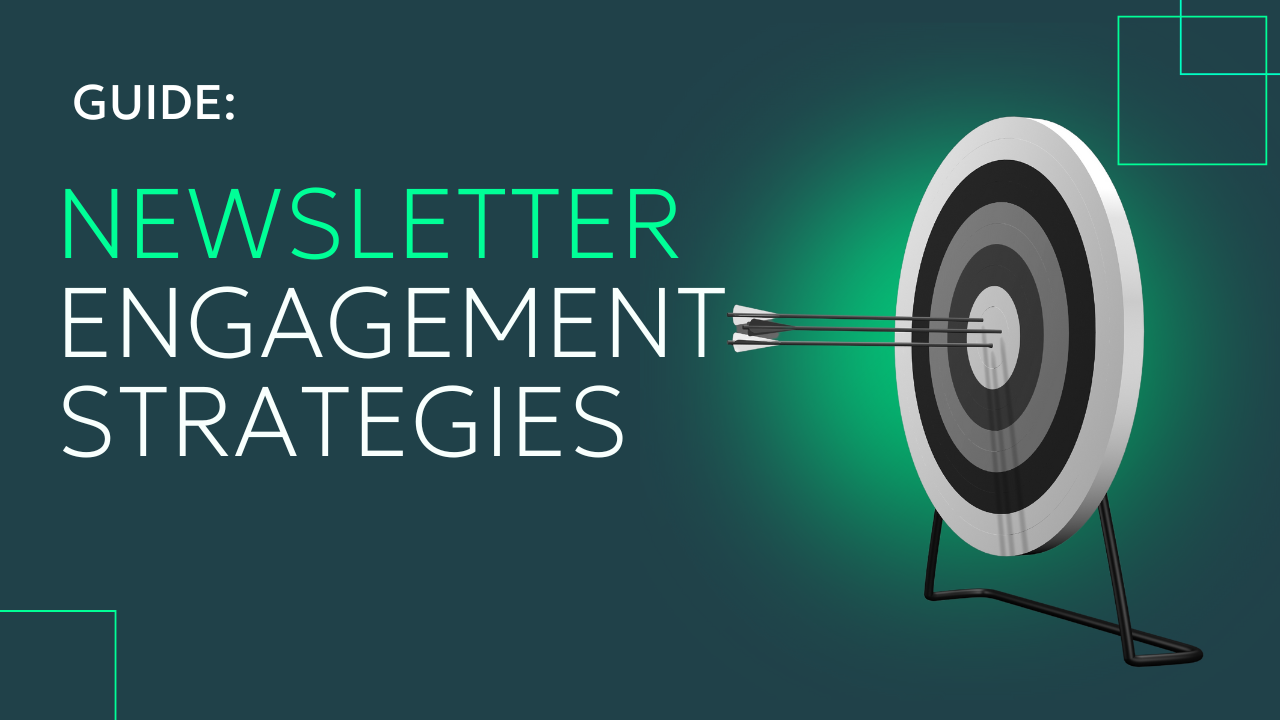2024’s Gmail and Yahoo Email Updates: Use These Changes to Create a Loyal and Engaged Subscriber Base
Gmail and Yahoo, two of the largest email service providers, are set to implement new standards for bulk email senders by 2024. If you use newsletters and email campaigns, these updates might seem daunting.
But here's the silver lining: these updates are a positive shift towards a cleaner, more secure email landscape. Reducing the noise of unwanted emails, which account for 45% of all emails sent, increases the chances of your messages being read and engaged with.
So, what do these changes really mean for you? How will they impact your email program? And most importantly, what steps do you need to take to align with these new email regulations?
We explore all these questions, providing clarity and actionable recommendations to ensure your email marketing strategy remains not just compliant but also more effective than ever.
What Changes Have Gmail and Yahoo Announced for 2024?
Gmail and Yahoo are setting the stage for a safer, more secure, and less spam-filled email environment. Key updates include:
1. For Gmail
- Mandatory email authentication using:
- Sender Policy Framework (SPF)
- DomainKeys Identified Mail (DKIM)
- Domain-based Message Authentication, Reporting, and Conformance (DMARC)
The total time required for setting up SPF, DKIM, and DMARC is around 1 to 2 hours. You can easily manage this yourself by following the instructions given in the next section. This small investment can significantly improve your email deliverability and trustworthiness.
- Straightforward, one-click option in emails for recipients to unsubscribe
- Strict spam rate thresholds to maintain inbox integrity
- Adherence to the Internet Message Format standards
- Prohibition of impersonation in email headers.
2. For Yahoo
- Similar requirements emphasizing email authentication and user-friendly practices.
These protocols are designed to verify the sender's identity and reduce the risk of phishing and spoofing attacks.
How Will These Updates Impact Your Newsletter/Email Campaigns?
These updates may initially seem worrying, but they are designed to enhance the integrity of your email outreach. By adhering to these standards, your newsletters are less likely to be lost in the spam folder and more likely to reach an audience that genuinely values your content.
If you send bulk emails, these updates mean adapting to new authentication standards and rethinking email content strategies. The goal is to ensure emails are not not only authenticated and trustworthy but also wanted by recipients.
Non-compliance could lead to emails being marked as spam or not reaching the inbox at all, which could significantly impact engagement and ROI.
How to Prepare for These Changes?
To align with the new email standards, your brand should:
Review Email Authentication
Ensure your SPF, DKIM, and DMARC records are correctly set up. This step verifies your identity as a sender and builds trust with email service providers.
Sender Policy Framework (SPF)
What it is: SPF is a security measure to prevent sender address forgery.
Where it lives: It exists in the Domain Name System (DNS) records of your domain.
How to implement: You don't need a tech team. Just access your domain provider's control panel, where you manage your website. Add a specific SPF record there, which is essentially a line of text.
Process time: Setting up SPF usually takes about 15 minutes. Verification might take a bit longer, depending on your domain provider.
DomainKeys Identified Mail (DKIM)
What it is: DKIM is a way to attach a digital signature to emails, which verifies that the email hasn't been tampered with.
Where it lives: Like SPF, it's set up in your domain's DNS records.
How to implement: Again, access your domain provider's control panel. You'll need to generate a DKIM key and add it to your DNS records.
Process time: The setup process is about 30 minutes, with some additional time required for the DNS changes to propagate across the internet.
Domain-based Message Authentication, Reporting, and Conformance (DMARC)
What it is: DMARC uses SPF and DKIM to enhance email security, providing instructions on how to handle emails that don’t pass these checks.
Where it lives: In your domain’s DNS records.
How to implement: It requires a bit more understanding of email policies but is still manageable without a tech team. You'll create a DMARC record and add it to your DNS settings.
Process time: Setting up DMARC can take about 30 minutes to an hour, depending on your familiarity with the process. In simple terms, these are not overly technical tasks. They're more about following specific steps to add the right information to your domain's settings.
Note for those with a tech team: If your DNS is managed by a technical team, simply request them to add the necessary SPF, DKIM, and DMARC records. Once done, inform us at Letterhead for verification of the new sending domain. This straightforward process ensures your email campaigns align with the latest standards.
Audit Email Content and Layout
Ensure each email contains an easy-to-find unsubscribe link. This not only aligns with the new regulations but also shows respect for your subscribers’ preferences, thereby enhancing your brand's perception.
Additionally, if you are a Letterhead user, you can rest easy knowing that compliance is taken care of. We, at Letterhead, automatically insert the required unsubscribe link into your emails, ensuring that you are always compliant with these regulations. This feature allows you to focus on creating engaging content without worrying about the technical compliance aspects.
Monitor Email Campaign Metrics
Regularly track open rates, click rates, and, most importantly, spam complaints. This will help you adjust your strategies to maintain engagement within the new thresholds set by Gmail and Yahoo.
It is important to be vigilant for any spikes in anomalies, such as an abnormal number of spam reports, unsubscribes, or a drop in engagement. These can be indicators that something in your email strategy needs attention.
But, it is also essential to keep these metrics in perspective. For instance, receiving a handful of spam complaints in a campaign sent to tens of thousands is not uncommon and does not necessarily indicate a major problem.
To give you a benchmark, the industry-accepted standard for spam complaint rates is less than 0.1%, or 1 complaint for every 1,000 sent messages. Rates above this are considered high.
Understanding and applying this industry standard, set by major inbox providers like Gmail, will help you maintain a balanced view of your campaign's performance.
How Adapting Early Can Help Your Brand
By adapting to these changes early, you can avoid last-minute rushes and potential disruptions to your email strategy.
Plus, complying with these standards can significantly boost your email marketing. Benefits include:
Improved Deliverability
Authenticated emails are less likely to be flagged as spam, ensuring your message reaches your audience.
Enhanced Trust
Subscribers are more likely to engage with emails from verified sources, helping you foster a more trustworthy relationship with them.
Better Engagement Metrics
Lower spam rates and user-friendly unsubscription options can lead to a more engaged subscriber base, improving your overall email performance
The Februrary 2024 changes in Gmail and Yahoo’s bulk email sender requirements are not just about adhering to new rules. They offer an opportunity to:
- Refine and improve your email marketing strategies
- Align with the latest standards in digital communication
- More importantly, stand out in your subscribers' now-less cluttered inboxes
Staying informed and proactive is key to navigating these changes successfully.
If you find the technical aspects of these updates overwhelming, remember that you’re not alone. You can always reach out to us for expert guidance and support. We can help you smoothly transition to the new standards, ensuring your newsletters remain effective and compliant.


